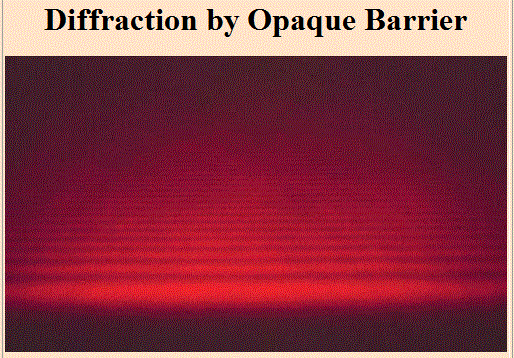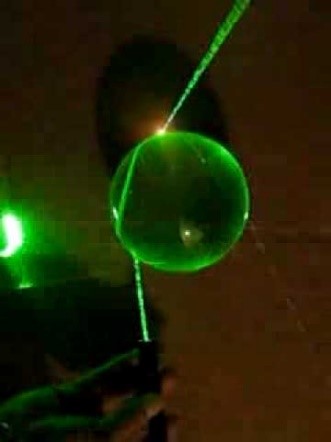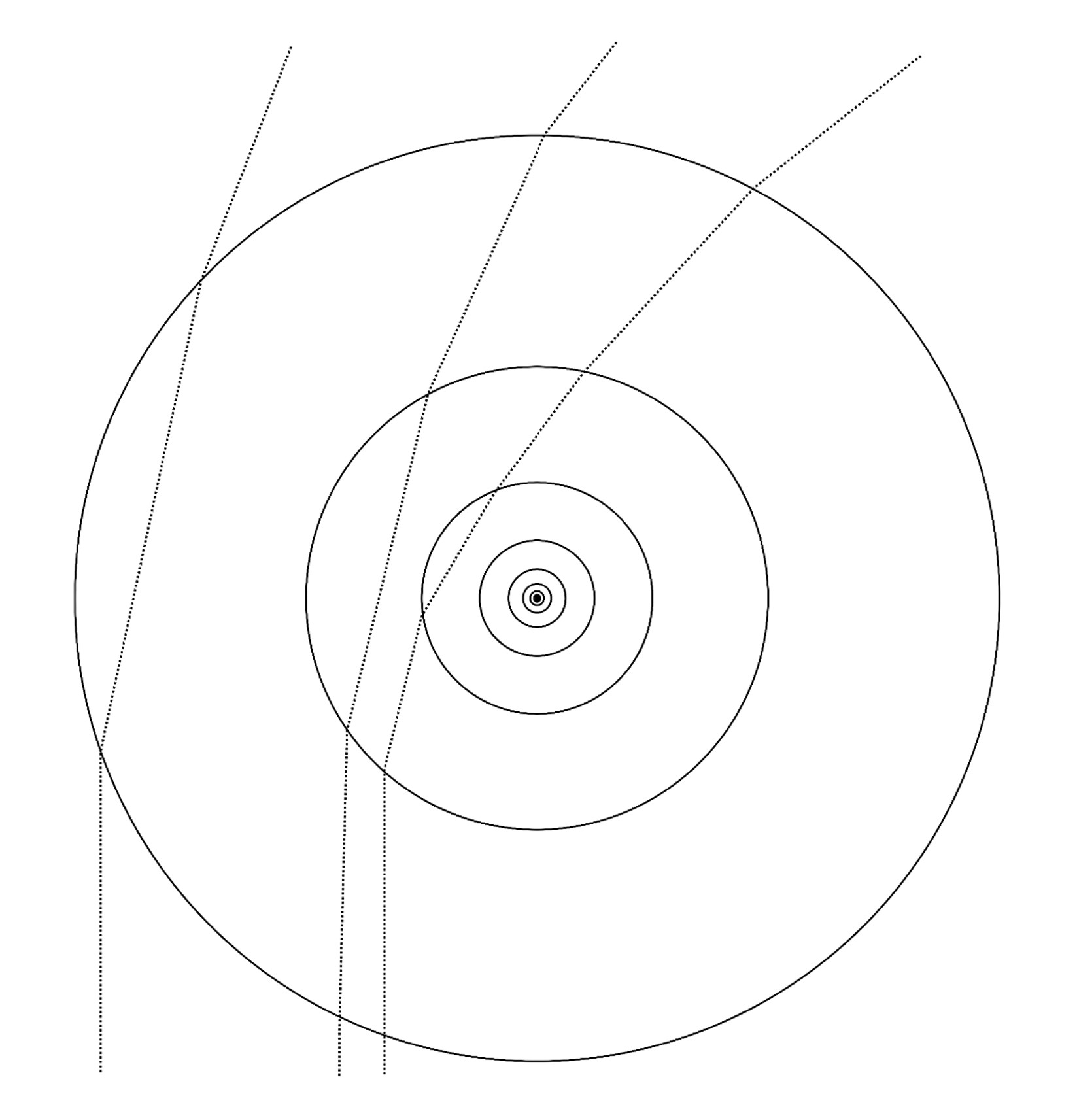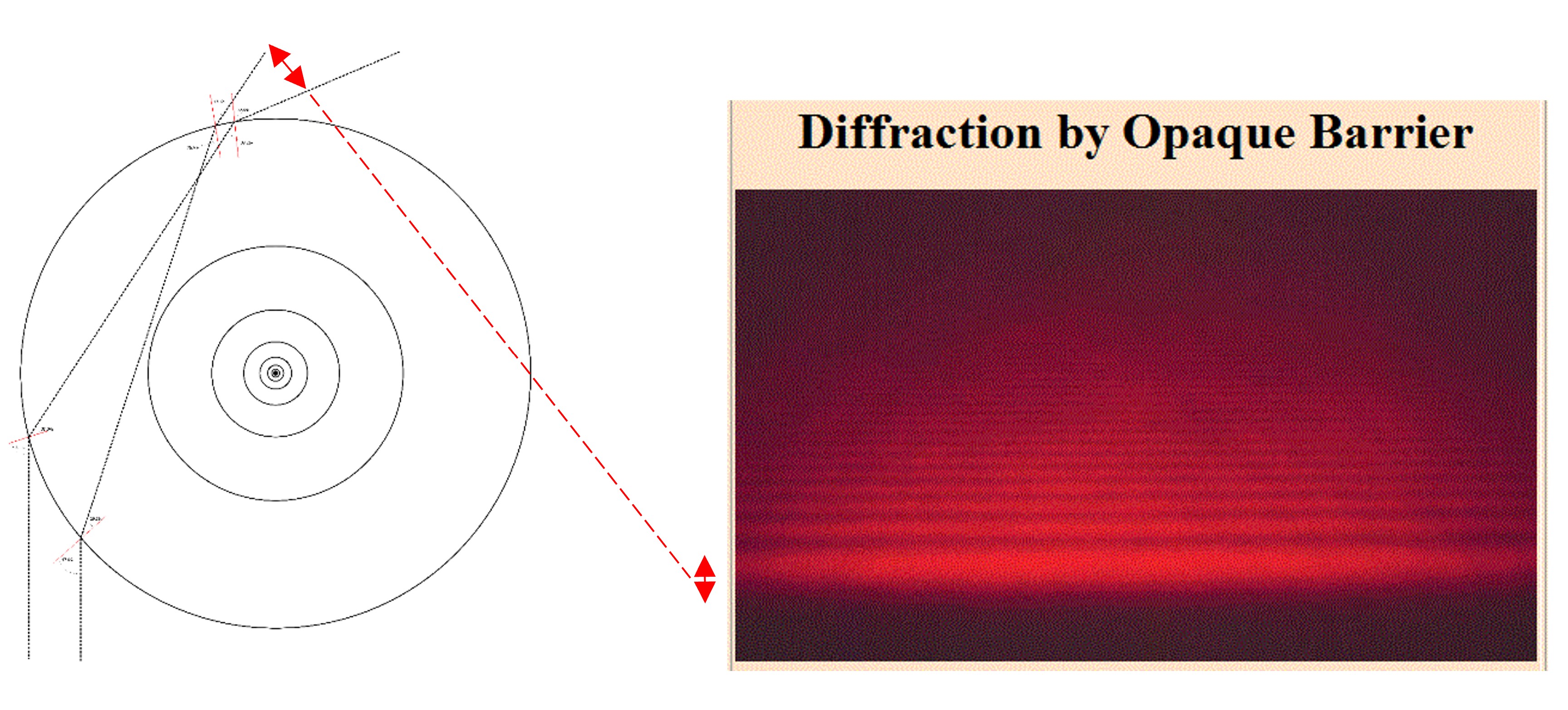We have mentioned more than once that it is very important to understand where a mathematical model ends and reality begins. The reason is that not recognizing this boundary has led to a lot of confusion in physics.
But equally dangerous is the pitfall surrounding analogies. Nowhere is this more obvious than in attempts to explain diffraction. Here is an image of the diffraction of water waves by two slits:

The peaks and valleys of the waves from the two slits overlap to either cancel each other out or enhance each other, forming the above pattern. Light passing through two slits forms a similar pattern against a screen:

The patterns are not identical. In particular no light appears directly in front of the slits in the second image. Where exactly the peaks and troughs and their interfering or enhancing overlaps occur depends on the size of the slits and the relationship of that size to the wavelength of the light. But, the similarity to the water example is striking.
This gets even more interesting when we notice that we get a diffraction pattern from a single edge:

Water does not exhibit this behavior, so the analogy falls apart.
Another observation makes it difficult to believe the analogy with interfering water waves. If individual electrons, say, are sent through a slit one at a time, they also form a diffraction pattern! If the pattern is caused by wave peaks interfering with wave troughs, with what is the individual electron interfering?
(To be sure, quantum mechanics has a model that “explains” this; it relates to the probability of the electron choosing one path over another upon passing through the slit. But this would throw us back into the philosophical paradoxes of quantum mechanics ([Issues with] Quantum Mechanics). Not to mention losing our unified nuclear/gravitational model.
According to The New Physics model, there might be another way to explain diffraction that would be more compatible with the fact that light is made up of photons carrying a shell of compressed space with them.
Take a careful look at how light is diverted by refraction through a sphere:

This occurs because inside the sphere the speed of light is different than it is in air, which causes it to change direction at the boundary.
But we know another place where the speed of light is altered: in the compressed space of quantum layers around atomic nuclei:


If diffraction is better explained by the effects of edges on light particles than by analogy with water waves, we would have a better intuitive understanding of mysterious effects like diffraction at an edge and single particle diffraction.